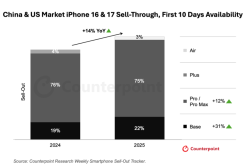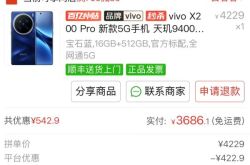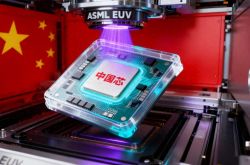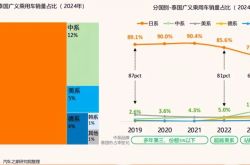Surge in Computing Power Leads to New Tech Boom | 2025 Mid-Year Report Special
![]() 09/04 2025
09/04 2025
![]() 562
562
A thousand sails vie for the wind.
Investor Network Lv Zihe
As the disclosure of mid-year reports reaches its conclusion in late August, the trajectory of China's pan-tech sector in the first half of 2025 becomes increasingly apparent. By August 27, leading enterprises such as Foxconn Industrial Internet, Hikvision, and Cambricon Technologies had completed their mid-year report disclosures. The data reveals prominent features of "AI computing power dominance, significant sub-sector differentiation, and leadership by key enterprises."
Sub-sectors like AI computing power, optical modules, and semiconductors have shown remarkable profitability, while traditional hardware sectors have explored new growth paths amidst structural adjustments. This mid-year report serves not only as a showcase for new technological opportunities but also highlights industry development challenges, providing vital insights for the second half of the year.
Computational power ignites the industry, and differentiation begins to take shape
In the first half of 2025, China's pan-tech sector's optimism was fueled primarily by the explosive growth in AI computing power demand, creating a full-chain growth trend spanning "upstream computing power infrastructure - midstream hardware manufacturing - downstream scenario applications."
From a global semiconductor market perspective, the industry was among the first to recover. According to World Semiconductor Trade Statistics (WSTS) data, the global semiconductor market size reached $346 billion in the first half of the year, marking a significant 18.9% year-on-year increase. Logic semiconductors led the way with a 37% market size increase, while memory semiconductors and sensors achieved 20% and 16% year-on-year growth, respectively. Although analog and micro-device growth rates were modest, they maintained a positive 4% increase.
China's semiconductor market demonstrated robust resilience. Despite a 9.8% year-on-year decline in total semiconductor industry investment to 455 billion yuan in the first half, this represented a marked improvement from the 41.6% decline in the same period last year. Notably, semiconductor equipment investment bucked the trend with a 53.4% increase, becoming the only area to achieve positive growth. This underscores the increasing domestic commitment and investment in supply chain autonomy and controllability.
AI computing power's growth trajectory has been explosive. Ministry of Industry and Information Technology data shows that China's intelligent computing power reached 788 EFLOPS in the first half of 2025, a 40% year-on-year increase. The proliferation of large generative models, rapid advancements in autonomous driving technology, and the continuous progress of smart city construction have propelled the "computing power race" from concept to practical application.
As the core component of computing power transmission, optical modules have benefited from the trend towards high-density connections. Market research firm Yole Group analyzed that in the data communication segment in 2024, AI-driven optical module market demand increased by 45% year-on-year. According to CICC forecasts, global shipments of 1.6T optical module transceivers will reach 4.7 million in 2025, with high-end optical module products of 800G and above serving as the cornerstone of corporate profitability.
At the policy level, the industry has received strong support. The Ministry of Industry and Information Technology's "Computing Power Interconnection and Interoperability Action Plan" aims to achieve national public computing power's standardized interconnection by 2028, forming a computing power internet with intelligent perception and on-demand access. The "East Data to West Computing" project has yielded notable results, with contract orders in Guizhou exceeding 155 million yuan and the data center in Horinger, Inner Mongolia, achieving a green electricity usage rate of over 80%.
Furthermore, the "Opinions on Deeply Implementing the 'AI+' Action" issued by the State Council on August 26 injected further momentum into the industry. The opinions propose that by 2027, AI will be widely and deeply integrated into six key areas, with the application penetration rate of new-generation intelligent terminals and intelligent agents exceeding 70% and the core intelligent economy industry scaling rapidly. These policies will continue to safeguard and support the pan-tech sector's development.
A CICC research report notes that as of August 8, 2025, the SW Communications Equipment Index has risen by 31.4% compared to the year's beginning, outperforming the broader market. As large models' capabilities continue to enhance, more application scenarios are expected to propel the ongoing explosion in AI inference computing power demand, driving AI hardware demand growth.
AI Enterprises Breakthrough, Traditional Hardware Seeks Innovation
Leading enterprises' mid-year reports reveal significant performance differentiation across sub-sectors, with AI-related enterprises emerging as the first half's biggest winners.
Foxconn Industrial Internet, a cornerstone in the AI server industry chain, performed exceptionally well in the first half of the year, leveraging its deep expertise in precision manufacturing, materials science, and system integration. Its mid-year report shows operating revenue of 360.8 billion yuan, a 35.6% year-on-year increase, and a net profit of 12.11 billion yuan, a 38.6% year-on-year jump. Both figures hit record highs for the period, with large-scale AI server shipments driving revenue growth.
Cambricon Technologies staged a remarkable comeback. As an emerging player in the smart chip field, it achieved breakthrough growth in the first half. Mid-year report data indicates that Cambricon Technologies recorded operating revenue of 2.881 billion yuan, a 4347.82% year-on-year surge compared to the same period last year. Notably, the company achieved a net profit of 1.038 billion yuan, turning losses into profits year-on-year. This marks Cambricon's first semi-annual profitability since its 2020 listing.
Behind this performance explosion lies the increasing prominence of the company's AI chip product core advantages. The Cambricon SiYuan 590 chip achieves 80% of NVIDIA's A100 performance in large model training and has successfully collaborated with leading enterprises such as ByteDance and Alibaba Cloud. By deepening technical cooperation with cutting-edge enterprises, the company promotes application landing, expands market scale, and ultimately achieves significant operating revenue growth.
Optical module sector leaders also shone, with Zhongji Xuchuang and InnoLight Photonics reporting substantial first-half performance increases. Zhongji Xuchuang's mid-year report shows operating revenue of 14.789 billion yuan, a 36.95% year-on-year increase, and net profit attributable to listed company shareholders of 3.995 billion yuan, a 69.40% year-on-year rise.
This performance growth was fueled by key customers' increased capital expenditures and investments in computing power infrastructure. Demand for high-end optical modules like 800G surged, accelerating optical module technological iteration to speeds of 1.6T and beyond.
From a business structure perspective, Zhongji Xuchuang's optical communication transceiver business generated revenue of 14.432 billion yuan, with a gross profit margin of 39.96%. The rapid increase in high-end product shipment proportions and continuous cost reduction and efficiency enhancements further bolstered the company's profitability.
InnoLight Photonics also achieved over 30% year-on-year net profit growth, leveraging its high-end optical module products' technical advantages and market expansion, fully benefiting from the AI computing power demand-driven industry dividend.
Traditional hardware enterprises are exploring new growth points amidst structural adjustments, with Hikvision and Luxshare Precision as notable examples. Hikvision reported first-half operating revenue of 41.818 billion yuan, a 1.48% year-on-year increase, and net profit attributable to shareholders of 5.657 billion yuan, an 11.71% year-on-year rise. While overall growth was stable, earnings quality significantly improved, with net cash flow from operating activities reaching 5.343 billion yuan, a 2917.51% year-on-year surge, attributed to improved sales collections and optimized cost control.
From a business structure standpoint, Hikvision's innovative business stood out. In the first half, innovative business revenue was 11.766 billion yuan, a 13.92% year-on-year increase, accounting for 28.14% of the company's revenue. Specifically, the automotive electronics business grew at 46.48%, while robotics and smart home businesses achieved 14.36% and 12.40% year-on-year growth, respectively, serving as crucial support to offset main business fluctuations.
Luxshare Precision, leveraging multiple businesses' coordinated development, achieved first-half operating revenue of 124.503 billion yuan, a 20.18% year-on-year increase, and a net profit of 6.644 billion yuan, a 23.13% year-on-year rise. In the communications business, the company has achieved mass production of 224G high-speed cable products, conducted pre-research work with multiple customers on 448G products, achieved mass production of 800G silicon optical modules, and is conducting customer validation for 1.6T products. In the automotive business, the company has continued efforts in high-voltage and high-speed wire harnesses, with multiple new projects obtained in 2024 set to achieve mass production in 2025. This multi-business layout provides a solid foundation for the company's revenue growth.
Driven by Technology and Scenarios, Localization Accelerates
Looking ahead to the second half of 2025, the pan-tech sector's optimism is expected to persist. However, addressing potential risks like rapid technological updates and supply chain fluctuations is crucial. Overall, development will feature "accelerated technological iteration, deepened application scenarios, and accelerated localization."
In terms of technological iteration, optical modules' upgrade to speeds of 1.6T and above will further accelerate. As domestic internet and equipment manufacturers' computing power demand continues to rise, demand for 400G and 800G high-speed optical modules will accelerate, driving related enterprises' revenue and profit growth.
In AI chips, domestic chips' performance and cost breakthroughs will be pivotal. Products like the Cambricon SiYuan series and HaiGuang Information have demonstrated strong competitiveness. With continued technology optimization, domestic AI chips' market share is expected to grow, fostering a continuous increase in intelligent computing power localization rates.
In the semiconductor equipment field, domestic electron beam lithography machines have achieved a 0.6-nanometer precision breakthrough, meaning domestic equipment can now support processes below 3 nanometers. This lays a solid foundation for the domestic semiconductor industry's long-term development and helps unleash mature processes' capacity. Localization will accelerate under policy support and technological breakthroughs' dual drive. The April 2025 implementation of the new "Tape-out Location = Origin Location" regulation has speeded up supply chain localization.
In semiconductor materials and equipment key areas, domestic enterprises will continue increasing R&D investment, continuously breaking technological bottlenecks, and reducing imported product dependence. Meanwhile, policy support will grow. Besides the already issued "Computing Power Interconnection and Interoperability Action Plan" and "Opinions on Deeply Implementing the 'AI+' Action," more detailed policies are expected in the second half, providing a favorable policy environment for the pan-tech sector's development.
However, the industry must also navigate development challenges. Optical module enterprises must address 1.6T products' cost reduction pressure, leveraging technological innovation and mass production to maintain product competitiveness. Semiconductor enterprises need to break through high-end material bottlenecks, enhance material performance and stability, and meet advanced process needs. Additionally, the global geopolitical environment's uncertainty may impact supply chain stability, necessitating further supply chain layout optimization and resilience and flexibility enhancement.
In summary, the prospects for growth in the pan-tech sector in the latter half of 2025 outstrip the associated challenges. AI computing power will remain pivotal, and it is anticipated that leading enterprises, equipped with technical barriers and scenario implementation capabilities, will sustain their industry leadership through differentiation, thereby propelling the high-quality development of China's pan-tech industry with significant momentum. (Produced by Thinking Finance)■
Source: Investor Network








